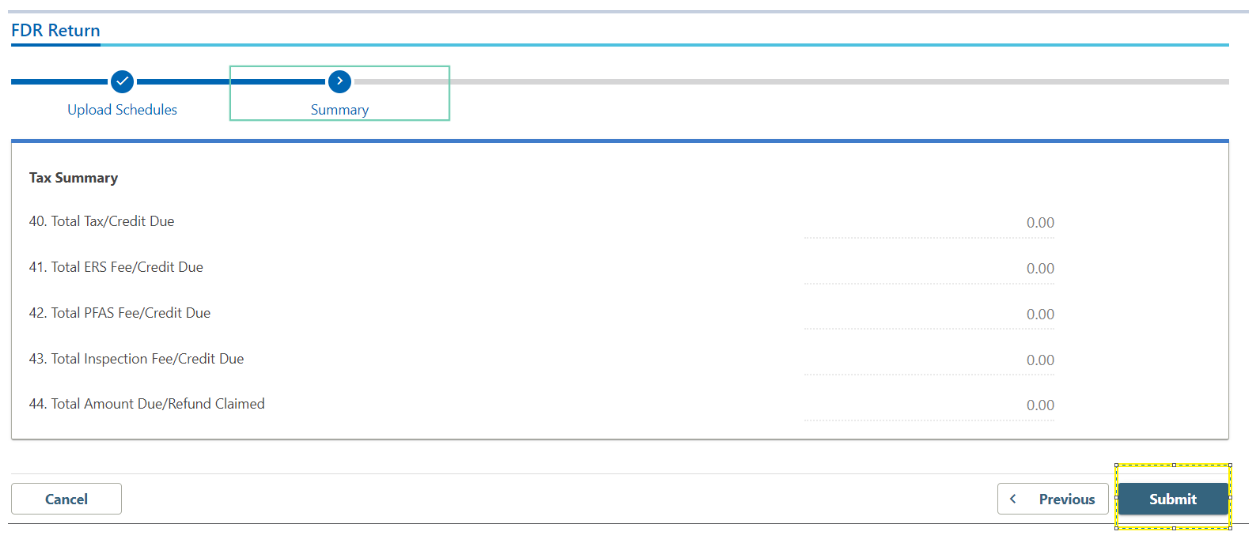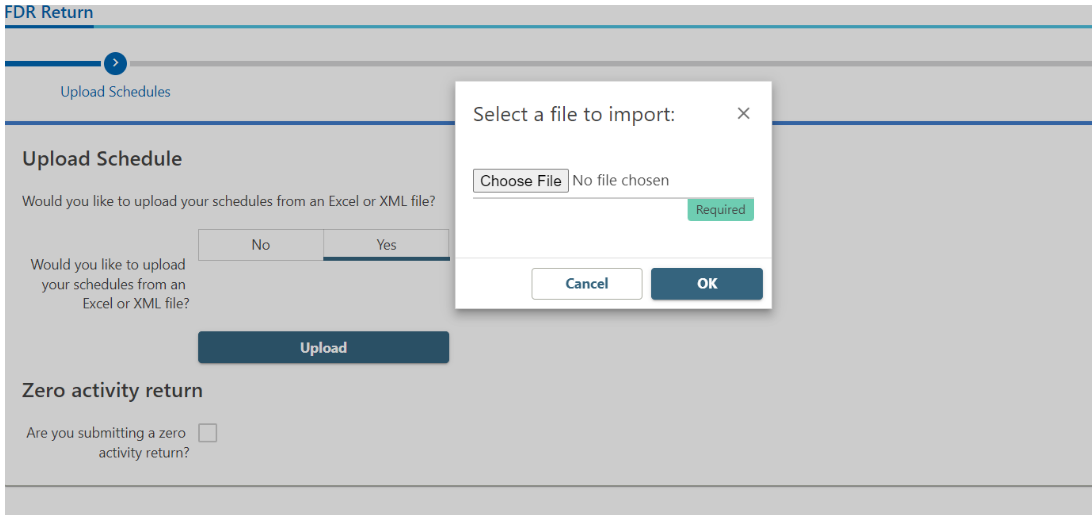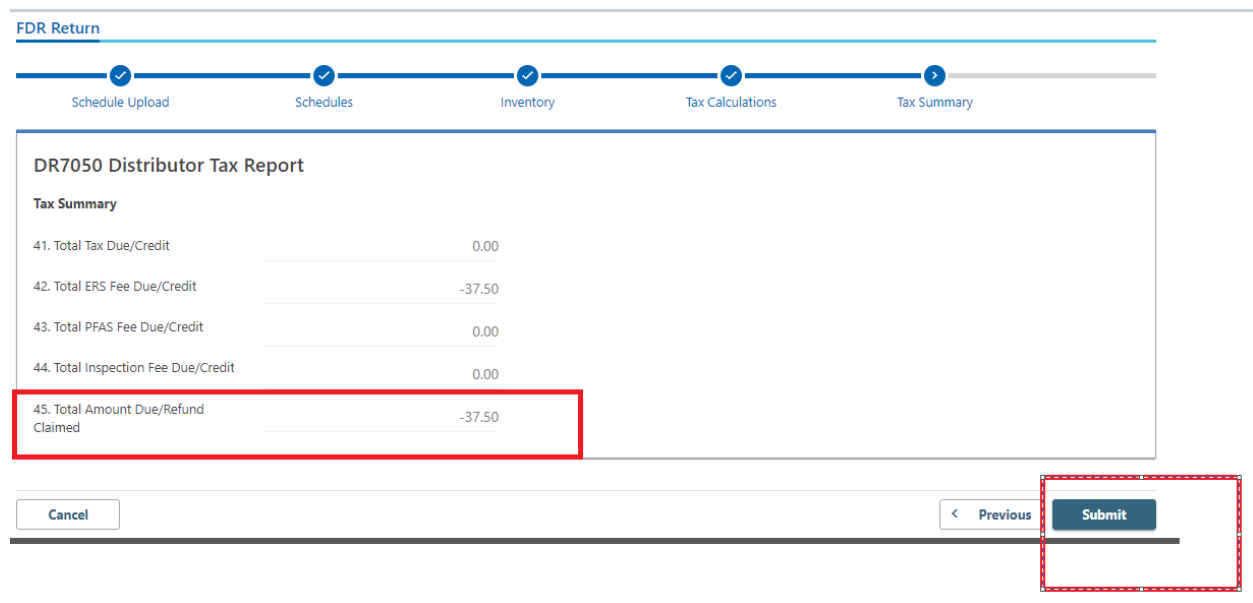Fuel Distributor Return Filing Instructions
Filing Requirements, Rules, & Options
Filing Requirements: A Fuel Distributor Return must be filed monthly. Returns are due monthly on the 26th day of the month following the activity or the next business day if the 26th is on a weekend or holiday. If a return is submitted after the due date, a penalty of $100 will be charged, and you will receive a statement by mail. Visit the Fuel Tax Filing Information or review the Fuel Tax Guide for more information.
Fuel Tax Return Rules: There are checks built into Revenue Online to help catch errors and invalid transactions before the return is submitted. Download the Reporting Rules for Distributors.
Filing Options: Carriers have 3 filing options:
- XML
- Spreadsheet
- Web Entry
If using XML or a spreadsheet, use the appropriate template.
Step-by-Step Filing Instructions
Step 1: Gather the Required Information to Complete Your Return
For information on what is required to complete your return, visit the Fuel Tax Filing Information web page.
Step 2: Complete this Step if Filing by Spreadsheet
Go to the Fuel Tax Spreadsheet Filing web page to access the current version of the Fuel Distributor Revenue Online Spreadsheet. Complete the Beginning Inventory, Ending Inventory, Letter of Credit Gallons, and Gallons Sold to Railroads for Locomotive Use as appropriate. If Letter of Credit Gallons is being claimed, attach supporting documents before going to the next screen.
Then enter required information for each fuel transaction.
- Sch - Enter schedule for activity being reported.
- Fuel - Enter valid fuel type (code).
- Mode - Enter the mode.
- Carrier - Enter the Carrier’s Name, ID Type (either SSN or FEIN) and their ID. IDs may have any of the following formats xx-xxxxxx, xxx-xx-xxxx, and xxxxxxxx.
- Origin - Enter the point of origin. Complete one of the three origin columns per record.
- Origin TCN - Valid TCN id, for example, T-84-CO-4100
- Origin City, State
- Origin Airport Code
- Destination - Enter the point of destination. Complete one of the three destination columns per record.
- Destin. TCN - Valid TCN id, for example, T-84-CO-4100
- Destination City, State
- Destination Airport Code - Enter a valid airport code.
- Note: each transaction must have an Origin and a Destination.
- Buyer/Seller - If entering a receipt, enter the seller of the fuel. If entering a disbursement, enter the buyer of the fuel. Enter the Buyer/Seller’s name, ID Type (either SSN or FEIN) and their ID. IDs may have any of the following formats xx-xxxxxx, xxx-xx-xxxx, and xxxxxxxx.
- Date Received - Enter the date of the transaction, this must be for the current period.
- Document Number - Enter the bill of lading or manifest number of the transaction.
- Gallons -
- If importing or exporting: net, gross and billed gallons are required.
- If reporting instate transactions, gross gallons is required for all fuel types, except propane (054), net gallons is required for propane.
- Once all receipts and disbursements have been recorded, save the spreadsheet to a location on your computer that you will be able to access. The spreadsheet is now ready to be uploaded into Revenue Online.
Step 3: Complete This Step if Filing by XML
Go to the XML Information web page to access the current version of the Fuel Tax Revenue Online Schema. Prepare the XML schema using a pre-formatted XML Schema, based on the guidelines listed with the schema.
Step 4: File Using Revenue Online
Log into your Revenue Online account and click on “File Return” under your Fuel Excise Tax account. You can also click on “File/Amend and View Returns/Payments to file a return for a previous period. To file a new return, click “File Now” for the period end date. To amend a previously filed return, click on “View or Amend Return” for the period end date, then choose “Amend” from the options at the top.
Zero Returns
Note: If you are filing a no activity (zero) return, verify No is selected for the, “Would you like to upload your schedules from an Excel or XML file? Question. Click on the box next to the, “Are you submitting a zero activity return?” question. Then click the “Next” button until you arrive at the “Summary” page and then click “Submit”.
You will receive a confirmation number on your screen after the return is submitted. With the option to print the confirmation page, and the return.
Step 5: Schedule Upload (Spreadsheet & XML Filers)
Step 5 - Part 1: If you are filing using a completed spreadsheet or XML file. Click on the Yes box and then click on Upload.
Step 5 - Part 2: A popup will appear over the screen. Click on Choose File, and find the correct file from your computer. After choosing a file click on OK.
Step 5 - Part 3: Once the file has uploaded, click on Next to go to the next tab, “Schedules”. If there are any issues found, the form number will have a Red Circle with an Exclamation mark inside of it to notify you of issues.
Each row that has a red circle with an exclamation mark on the far left will need to be corrected. For example, the first row has the indicator on the far left and a different one by the Carrier ID. This indicates the carrier id is not complete.
Slide the bar to the right to determine if there are any errors in the columns to the right that are visible.
You may correct the errors by entering the correct information directly into Revenue Online, or by correcting them on the file and re-uploading the file. After all records in the Schedule tab are corrected, select Next.
Step 6: How To Add Transactions by Web Entry
On the Schedules tab, click on “Add a Schedule”, or “New Schedule” if records already exist. Complete the screen for the first transaction. The transactions are on the same tab (DR7050). They can be input in any order, whether they are receipts or disbursements. The next page labeled “Return Schedule Summary” will summarize them based on the schedules reported.
- To report additional transactions, you can select Copy Schedule, and Revenue Online will autofill the previous entry, then you can adjust it for your next transaction.
- To complete an entirely different transaction, select New Schedule. Then select “Next” when you have recorded all transactions for all receipts and disbursements.
- If you added an extra record, you can select Delete Schedule to remove it.
- See Step 2 for details on completing each record.
Step 7: Inventory Tab
Verify the total for each schedule and fuel type that you entered to calculate the correct number of gallons.
Verify this section is correct if data was added through the spreadsheet or XML file. If data was entered through Web Entry scroll down to the end of the page to record your inventory.
- Enter your beginning inventory on line 16
- Enter your Ending Inventory on line 18.
- If you have other qualifying adjustments, enter Letter of Credit Gallons on line 19. You must provide a letter of credit issued to you by the department.
- Enter Gallons Sold to Railroads for Locomotive Use on line 20.
If you are not able to select Next on the Inventory tab, scroll down to determine if there are any errors indicated. If there are errors, correct them and then select Next.
Step 8: Tax Calculations Tab
This tab does the calculation for the taxes and fees, taking into consideration the applicable statutory allowances. Verify data and then select Next.
Step 9: Tax Summary
This tab summarizes the total of the tax and fees that are due or if a refund is being claimed. After you are satisfied with the return, select Submit.
Step 10: Confirmation Page
A confirmation page will be displayed and can be printed as proof of filing. To print a copy of the summary pages and total due, return to the period and select print.
And you’re done filing your Fuel Distributor Tax Return!
The final step is to make your return payment electronically.









